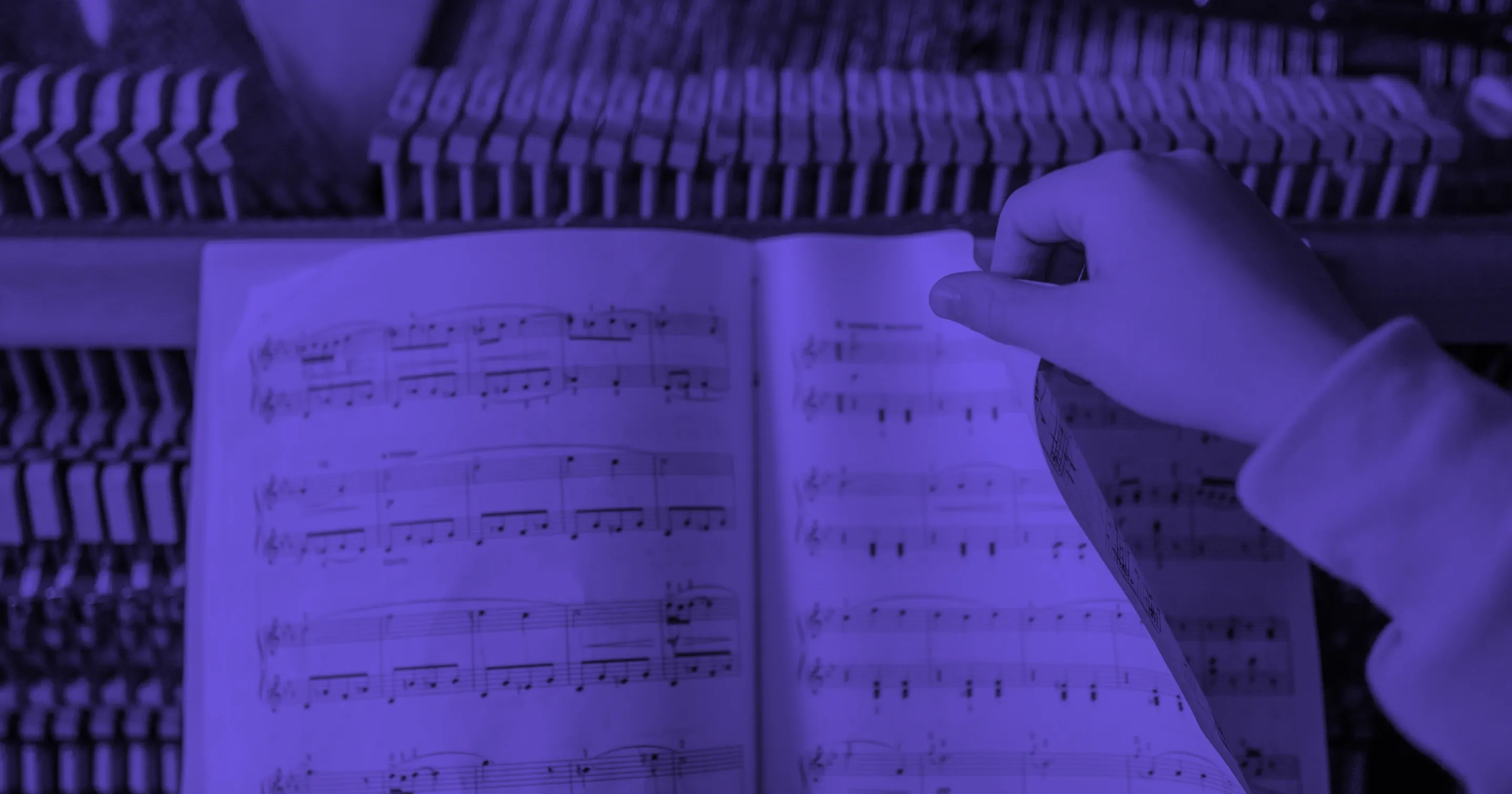
Master The Aeolian Mode: Unlocking Its Sad & Soulful Foundation
Unlock the power of the Aeolian mode, also known as the natural minor scale. Learn its formula, chords, and the progressions behind sad, epic, and soulful music.
Introduction
Many pop ballads, rock anthems, and folk songs achieve their distinctively sad, serious, or soulful sound through the use of the Aeolian mode. It’s the go-to scale when you want to establish the familiar melancholy of the natural minor scale, providing a powerful alternative to the brightness of the major scale. It can inject a thoughtful, dramatic, epic, or romantic character into your music.
What sets Aeolian apart is its identity as the natural minor scale. It is the benchmark against which all other minor modes are measured. Its combination of a minor third, minor sixth, and minor seventh degree is the primary source of its characteristic sound, creating the foundational harmony for countless songs across nearly every genre.
This familiar intervallic makeup gives Aeolian its direct and emotionally resonant energy. Whether you're aiming for a heartfelt melody, a powerful chord progression that feels both strong and somber, or the timeless feel of a classic ballad, Aeolian is a fundamental choice.
This guide will unpack the Aeolian mode, from its theoretical foundation to its practical, real-world applications. We'll explore how it's constructed and, more importantly, demonstrate how you can effectively use its well-established voice to add depth and character to your music.
If you’re new to modes as a concept, our article"Master Music Modes"provides a comprehensive overview.
Deconstructing the Aeolian Scale: Theory & Construction
Understanding the Aeolian mode begins with grasping the foundation of music modes theory. Two primary ways to approach its construction are its relationship to a parent major scale or its unique interval pattern.
The Parent Major Scale Relationship (The Easiest Starting Point)
One way to conceptualize the Aeolian mode is by understanding its origin within the family of modes generated by any major scale. All modes born from a single major scale utilize the same collection of pitches. Aeolian holds the position of being the sixth mode in this family.
This means that if you identify the notes of any major scale, and then reframe that set of notes by treating its sixth degree as the new tonal center or root note, you are effectively playing in the Aeolian mode. This is also known as the relative minor.
For example, let's take the familiar C Major scale: C – D – E – F – G – A – B – C.
Its sixth note is A. When we use these same notes but anchor our playing from A (A – B – C – D – E – F – G – A), we've constructed the A Aeolian scale.
It's crucial to grasp that while A Aeolian is built from the same notes as C Major (its “parent scale”), the change of the tonal center to A radically changes its melodic and harmonic landscape. The intervals, now measured from this new A root, create the distinctive and characteristic sound of the natural minor scale.
The Interval Formula: Building from Scratch
While the parent major scale method is excellent for conceptualizing, understanding the interval pattern allows you to build an Aeolian scale from any starting note without first thinking about, or relating it to, its parent major scale.
The Aeolian mode's formula, in terms of whole (W) and half (H) steps, is:
Whole - Half - Whole - Whole - Half - Whole - Whole (W - H - W - W - H - W - W)
Let's compare this to the major scale (Ionian mode) to hear the unique identity of the Aeolian mode. We’ll do this in the key of A.
The most common application of a mode is in the harmonic context of its tonic. In other words, A Aeolian is generally used to create an"A minor"feeling, rather than consciously relating it to its parent C Major scale in performance.
The Crucial Difference: The Natural Minor Sound (b3, b6, b7)
Compare Aeolian to the major scale. The crucial difference lies in three flattened notes: the minor 3rd (b3), minor 6th (b6), and minor 7th (b7). This combination is the hallmark of the Aeolian mode and the natural minor scale.
This collection of lowered degrees is what gives Aeolian its unique and definitive character. It transforms the bright major scale into a sound that is universally recognized as sad, serious, or soulful.
This established"sad"quality makes Aeolian a go-to choice for evoking specific moods. It's frequently heard in the heartfelt expression of pop ballads, the driving power of rock anthems, and the dramatic atmosphere of film scores. Depending on the context, Aeolian's character can manifest as soulful melodies, powerful riffs, or nostalgic chord progressions.
Constructing the Aeolian Mode in Various Keys
Let's use the Aeolian interval pattern. We’re already familiar with the Aeolian mode with A as its tonic. But let’s apply this mode using different root notes.
Try constructing the Aeolian scale variations for C, D, and F# using the whole and half-steps formula.
The Importance of Identifying Intervals
Knowing the theory behind the Aeolian mode is a good starting point, but to really get a feel for its sound, training your ear is essential. The best way to do this is by listening carefully to how Aeolian is actually used in music. This will help its familiar sound stick with you, making it easier to recognize in melodies and chord changes.
Listen to popular songs that make good use of the Aeolian mode. As you listen, focus on the overall minor quality and the sound of common progressions, such as i-VI-VII. A good exercise is to try singing or playing the minor third (b3) and minor sixth (b6) over a simple tonic chord; it's a great way to internalize the mode's core emotions.
The more you surround yourself with Aeolian's sound and practice picking out its defining intervals, the more it will become a natural part of your musical toolkit. You'll start to develop an intuition for when and how to use its powerful emotional weight.
With the help of our “Ear Training” article, you can practice your ability to recognize and identify intervals.
When to Reach for Aeolian (and When Another Mode Might Be Better)
Aeolian excels in:
When another mode might be preferable:
Aeolian Mode Chords: Harmony & Chord Progressions
The chords built within the Aeolian mode are the very foundation of minor-key harmony, providing the progressions that have defined music for centuries.
Chord Qualities within the Aeolian Mode
We can build triads and 7th chords on each degree of the Aeolian mode. Let's use A Aeolian as our example (A-B-C-D-E-F-G):
Crucial Points for Aeolian Chord Progressions
Expand your music theory knowledge and discover techniques for building captivating chord progressions by visiting the Musiversal blog on music theory.
Aeolian Mode Chord Progressions
These progressions highlight the foundational sound of Aeolian harmony:
Popular Songs & Pieces in Aeolian Mode
Theory truly comes alive when applied to real music. Since Aeolian is the natural minor, the list of examples is almost endless.
The Aeolian mode is a cornerstone of popular music. Next time you’re writing a song and you want a sad, thoughtful, dramatic, or epic sound, the Aeolian mode is your most reliable and powerful tool.
Conclusion: Mastering the Aeolian Mode
Here are the key takeaways about the Aeolian mode:
To maximize a mode's impact, you can use it consistently to establish its unique tonal color. Contrasting it with its relative major (Ionian) is a classic technique for shifting the emotional energy of a song.
The more you immerse yourself, the more naturally the Aeolian mode will become a powerful and expressive tool in your musical arsenal. Embrace its familiar power, and let the soulful voice of Aeolian elevate your music.
Your Music, No Limits.
Join the Waitlist